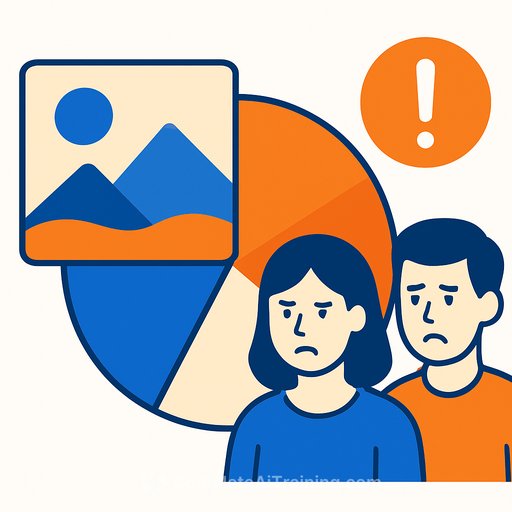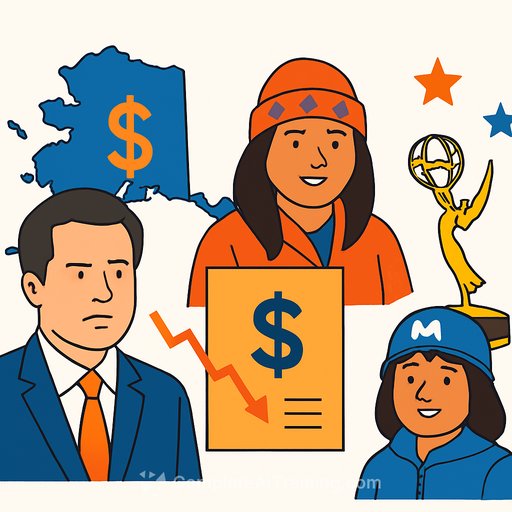AI-generated cover art gets two top New Zealand authors disqualified: what writers need to know
Two of New Zealand's most respected writers, Stephanie Johnson and Elizabeth Smither, have been ruled ineligible for the 2026 Jann Medlicott Acorn Prize for Fiction after organisers found AI-generated elements on their book covers.
Johnson's short story collection Obligate Carnivore and Smither's novella Angel Train were both published by Quentin Wilson Publishing. A bookseller raised the concern; the publisher confirmed AI was used in the jacket art. The prize, part of the Ockham New Zealand Book Awards, is worth NZ$65,000.
The rule that changed everything
In August, the New Zealand Book Awards Trust introduced a rule: entries must not contain AI material of any kind-writing, jacket art, illustrations, or decorative imagery included.
The publisher says the covers were created and submitted before that rule existed. "Far too late" to adjust design briefs, they argued. The Trust's chair, Nicola Legat, said the criteria apply to everyone and must be enforced consistently, while signaling rules may need review as AI progresses.
Ockham New Zealand Book Awards
Authors push back
Johnson said she dislikes AI in creative work and has never used it in her writing. She believed her cover showed a real cat with edited teeth, not AI-generated imagery. "Instead of talking about my book, we're talking about AI-which I hate."
Smither said the designers put hours into the cover and worried their work was being disrespected. Both writers questioned how much a cover should influence literary judging.
Yes, the cover counts
Past judging guidelines ask for assessment of literary merit and production quality, including jacket design. Johnson, a former judge, noted she hadn't weighed covers heavily at the time; she later saw the guideline reference.
Implications for writers
This isn't just a design issue. It's eligibility, trust, and brand risk. If your book touches prizes, grants, retailers, or festivals, assume AI rules can affect every part of the book-text and visuals.
Action checklist: protect your eligibility
- Brief your team: "No generative AI anywhere in the book" unless a specific policy says otherwise. Covers, interior art, ornaments, maps-everything.
- Get attestations: Require written confirmation from designers, illustrators, and agencies that no generative AI was used, plus the sources for all assets.
- Contract for it: Add clauses banning generative AI (or defining approved use), requiring disclosure, and shifting liability for breaches.
- Track provenance: Keep source files, stock licenses, invoices, and emails that show where every image came from. Treat covers like chain-of-custody.
- Do a pre-submission audit: Before entering awards, review every visual element against current criteria. Don't rely on memory-use a checklist.
- Build time buffers: Assume rules can change mid-cycle. Leave room to redesign a cover without missing deadlines.
- Avoid "AI-detection" traps: Tools can be unreliable. Prioritize documentation and vendor guarantees over guesswork.
- Use safe sources: Prefer stock libraries and studios with explicit no-AI policies and clear license terms and model releases.
- Communicate internally: One-page policy, shared folder for proofs and licenses, and a sign-off step before print or upload.
If you discover AI in an existing cover
- Swap the artwork quickly and reissue files (print/digital). Update ONIX/metadata if needed.
- Document the fix and notify partners who require it (awards, distributors, festivals).
- Ask organisers whether a corrected edition restores eligibility. If not, protect the book's reputation by stating your policy publicly.
Bottom line
Rules are tightening. Awards and institutions are drawing hard lines on AI use across text and visuals. As the authors' experience shows, a single image can cost you a major opportunity.
Set your policy, lock your contracts, and keep receipts for every pixel.
Resource: If you want a structured way to upskill your team on AI policy and tools (so you can avoid expensive mistakes), see our curated job-based learning paths: Complete AI Training: Courses by Job.
Your membership also unlocks:






